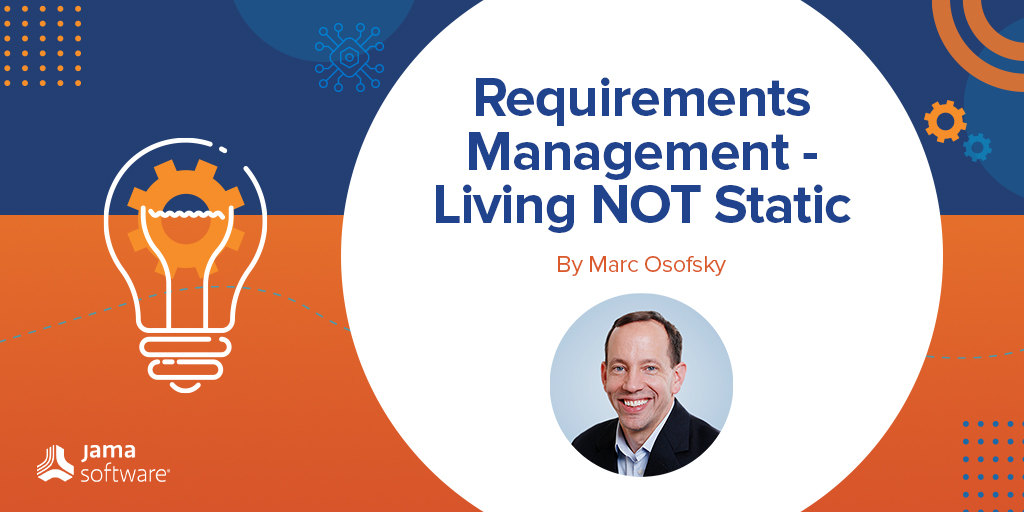
My first job out of college I worked for a large agri-business in Russia and toured all types of food processing facilities. The saying that you do not want to see sausage being made definitely holds true. What may surprise many of you is that the behind-the-scenes process to make the newest, shiniest tech, can be equally messy.
At Jama Software, we are fortunate to be working with leading companies, in the most innovative sectors of the economy, and are deeply immersed with our clients on state-of-the-art approaches to product development. So, we “see the sausage being made.”
Common Symptoms
When we begin working with a new client, the described symptoms of the product development process are often not pretty: business stakeholders are frustrated, requirements are not validated nor verified, requirements are missed, there is limited reuse, defects are too prevalent, costly delays, after the fact compliance that is heavily manual, no requirements traceability, significant rework, no real-time visibility and much more. After articulating these symptoms, most companies do not have a clear understanding of what the root causes are that are the origin of the symptoms.
Two Fundamental Causes
Our perspective, after working with over 600 companies, is that most organizations face two fundamental root causes that must be addressed to resolve these symptoms and reduce product development risk:
- The end-to-end process to deliver product is fragmented into siloed teams, activities, and tools
- The requirements that specify necessary dependencies and outcomes are trapped in static documents
As a result of these two key issues, the costs and risks of product delays, defects, omissions, regulatory gaps, and failures continues to run much too high.
As with most organizational challenges, there is a good reason for the fragmentation of the product development process – engineers. Engineers have been (and continue to be) enabled to choose their own tooling that best enables their productivity within their field of responsibility. As a result, end-to-end process data is siloed in numerous tools — within software, hardware, electrical, embedded systems, testing, etc.
RELATED POST: See How Infineon Transitioned From A Document-Based To A Data-Centric Development Workflow Using Jama Connect
The Resolution
Nearly every other business process has resolved this problem by forcing everyone on a common platform (think ERP, CRM, etc.). That approach will not work for the product development process given the complexity and diversity of engineering disciplines. The answer lies in somehow connecting static requirements to downstream activity – but how is that possible with requirements stuck in documents and little to no integration among the fragmented engineering silos?
Our top-performing clients are all taking the same approach. They have moved away from static requirements documents and have implemented LIVING REQUIREMENTS™ that form the common thread through all downstream activity to link each requirement to its decomposed user stories, dev status across engineering teams, change impact analysis, risk analysis, test results, defects, rework, launch and market feedback. The table below highlights the main differences between STATIC and LIVING requirements:
|
|
STATICRequirements |
LIVINGRequirements |
Item-level thread to all downstream process states |
X |
✅ |
Impact of change easily determined |
X |
✅ |
Exception reporting on missed requirements |
X |
✅ |
Compliance is highly automated |
X |
✅ |
Enables end-end process improvement |
X |
✅ |
Enables benchmarking performance |
X |
✅ |
Team productivity improvements |
X |
✅ |
Overall product risk reduction* |
X |
✅ |
RELATED POST: Requirements Traceability: How To Go Live
Differences between STATIC and LIVING Requirements
In short, Living Requirements address the root causes (identified above) to deliver increased productivity, faster speed of delivery, and risk reduction. This includes all areas of the complex product, systems, and software delivery lifecycle that can experience negative outcomes and should be actively managed to reduce the likelihood of occurrence.
- Performance | Product fails to perform specified functions
- Quality | Product defects are discovered by customers post-launch
- Delays | Product release deadlines are missed
- Fit to Requirements | Product fails to meet the needs of customers
- Compliance Gap | Gap identified late and extreme cost to rework and fix
- Regulatory Action | Product is not approved for launch or recalled post-launch
LIVING REQUIREMENTS are clearly becoming a competitive advantage in the innovation economy. If your requirements are still STATIC, you are falling behind. We encourage you to reach out to our team of experts and learn more about joining the LIVING.
Jama Connect’s Requirements Management Enables Live Traceability™ Across Your Development Process.
Bridge engineering siloes across development, test, and risk activities. Provide end-to-end compliance, risk mitigation, and process improvement with our intuitive, award-winning requirements management platform. Learn more!
To learn more on the topic of requirements management, we’ve curated some of our best resources for you here.
- Requirements Traceability – How to Go Live - October 30, 2024
- What is the Definition of a Digital Thread? - September 18, 2024
- Traceable Agile™ – Speed AND Quality Are Possible for Software Factories in Safety-critical Industries - October 3, 2023